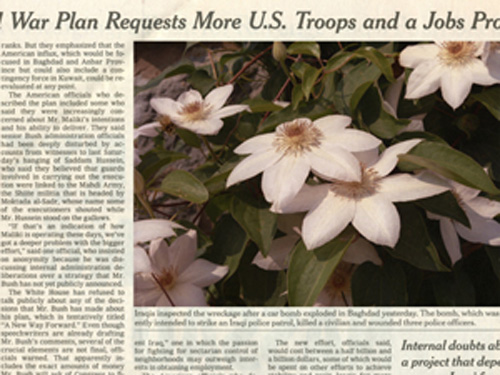Notice how each entry here — any of which you can use to prompt authentic reflection in your portfolio — addresses the claim that “good writing” is not just error-free prose, but the result of good, recursive, honest, critical and reflective thinking:
- Be honest. All good portfolios are notably honest.
- Take and show some ownership over your portfolio. Yours need not look exactly like the examples I’ve shown you. You’ve seen the conventions; once you get the conventions, you can break them.
 Where did you stretch yourself—genuinely challenge yourself? Tell your readers what that experience was like and how you handled it. Readers will be looking for this; it’s the allowing-for-perplexity angle from our course goals.
Where did you stretch yourself—genuinely challenge yourself? Tell your readers what that experience was like and how you handled it. Readers will be looking for this; it’s the allowing-for-perplexity angle from our course goals. Have you reflected on your habits of mind? What do you notice?
Have you reflected on your habits of mind? What do you notice?- Is there a gap between what was supposed to happen and what actually happened? Can you describe it?
- — From a previous portfolio: “I wasn’t only editing my papers, I was editing myself.”
- — From an Op-Ed reflection: “I don’t know what right I have to make this appeal.”
- — From a reading journal: “I always had a completely different perspective than the class discussions, or where they headed, especially with the immigrant family article, but was never sure how to say that in class.”
- Use the critical language of the course in your reflections, like the three bolded examples, above.
- Do you have any before & after paragraph revisions to showcase?
- Can you describe the feeling of exploring, challenging, probing your own assumptions? Or having someone do it for you?
- “It’s good for students to see that writers can think critically about their own work and go back and revise what they meant.”
- Check your quiver & your self-editing toolkit.
- Reading I: Arthur Miller — “A good newspaper, I suppose, is a nation talking to itself.” Thoughts?
- Reading II: Are you a slow, deep, contextual, rhetorical reader? What kind of reader are you?
- Be honest.
Remix project specific reflections, revised after class Thursday
What we’re trying to get at here are the differences — real, imagined, potential — between text-based essays and multimodal (video, sound, gesture, collage/montage, etc.) compositions:
- What meaning do you want/expect/anticipate that your viewers or listeners will get?
- What assumptions did you make about your audience in terms of prior knowledge, expectations, or their ability to “get it”?
- Are there any specific choices and decisions that you made along the way that seem to anticipate your audience’s prior knowledge, expectations, or their ability to “get it”?
- Were you able to accomplish something with your remix that you could not have accomplished in an essay? Or that you accomplished differently?
And in terms of print-and-digital technology & social practice, consider this art exhibit introduction:
Newspapers are still with us, but the public role of at least the printed version is greatly diminished. We have effectively left the era of the printed page in which newspapers covered the land like rain. Yet, as the world becomes increasingly virtual and digital, newspapers take on an expanded role in our imaginations.
This exhibition will focus on currently working artists whose engagement with the material and content of newspapers gives us a window on its changing status. All of the artists grew up with newspapers as quotidian objects. They are perhaps the last generation to do so.
Does anything there resonate with you?



